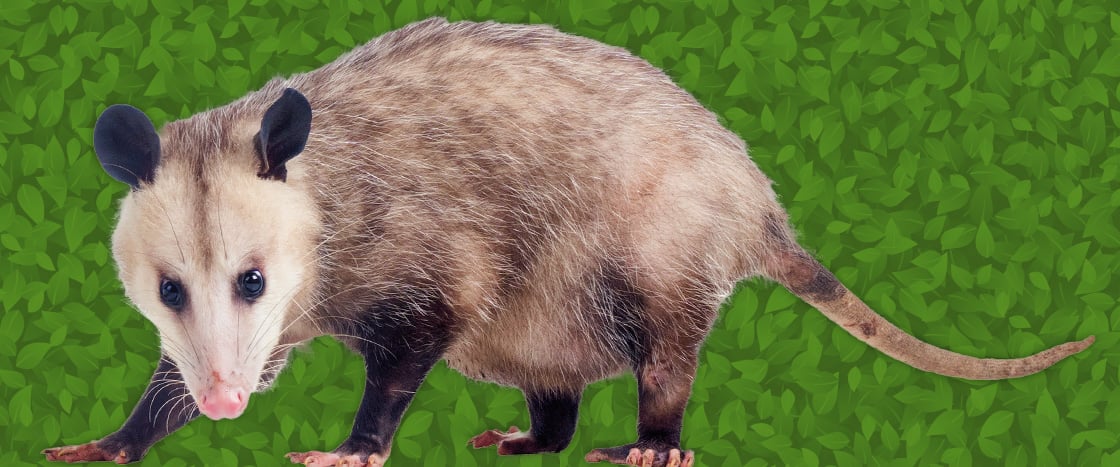I’m a marsupial— a mammal that carries its babies in a pouch on its belly.
I have thumbs on my back feet! They help me hold on to branches when I climb trees.
I use my tail to carry the sticks and leaves I need to make my nests.

Opossums (also known as possums) help us and the environment—just by being themselves

vector bucket/Alamy Stock Vector (Worried Emoji); Shutterstock.com (All Other Images)
I’m a marsupial— a mammal that carries its babies in a pouch on its belly.
I have thumbs on my back feet! They help me hold on to branches when I climb trees.
I use my tail to carry the sticks and leaves I need to make my nests.
Nature’s Cleanup Crew
Opossums help keep us safe by eating things like poisonous snakes and disease-carrying rats. They also clean up the environment by gobbling down rotten fruit and roadkill.
By the Numbers
Opossums have been around for more than 70 million years. (At that time, dinosaurs still lived on Earth!)
Opossums usually grow to be about 26 inches long, as big as a house cat.
There is only 1 type of opossum in the U.S.: the Virginia opossum. (But it’s found across North America.)
Opossums: Fact or Fiction?
They play dead.
Fact! Opossums keep predators away by fainting, releasing a stinky smell, and looking like they have stopped breathing.
They are dangerous.
Fiction! Opossums are wild animals that like to stay away from humans. But if you bother them, they will hiss and growl to scare you off!
They come out only at night.
Fact! Opossums are nocturnal, or mostly active at night. (If you see an opossum during the day, it’s probably hungry and looking for food.)
Write to Win
Imagine you are an opossum. Write a journal entry, personal narrative, or poem about why you are proud to be yourself. Include details from the infographic. Entries must be submitted to “Opossum Contest” by a teacher, parent, or legal guardian.* Three winners will each receive a $25 gift card for the Scholastic Store Online.
Contest deadline: June 1, 2025
*Entries must be written by a student in grades 2-8 and submitted by their teacher, parent, or legal guardian, who will be the entrant and must be a legal resident of the U.S. age 18 or older. Visit the Storyworks Contests page for more information.
This infographic was originally published in the May/June 2025 issue.
1. Preparing to Read
2. Reading and Discussing the Infographic
3. Skill Building and Writing
For more infographics about amazing animals, check out “Pick Your (Animal) Superpower,” “Bats: Spooky or Sweet?,” “Superheroes of the Animal Kingdom,” “The Amazing Axolotl,” and “Save the Bees!”
Your students will enjoy watching this charming and informative 8-minute video. You can also visit a webpage to find out more about this often misunderstood animal. (Note: Video includes short ads. Nipples are mentioned during a discussion on how young opossums develop.)